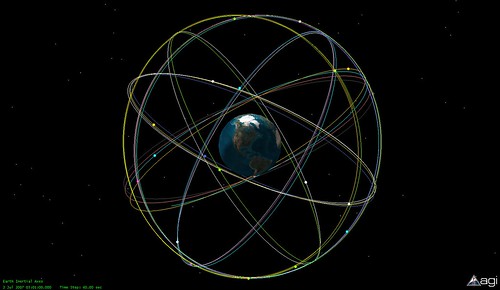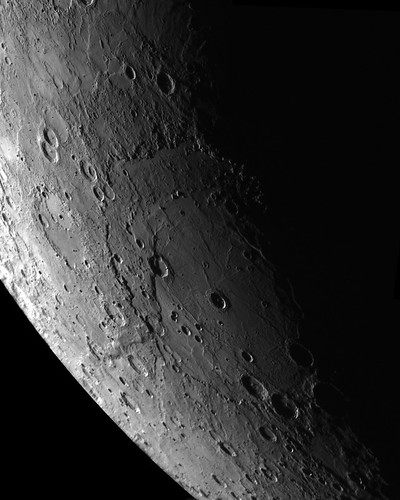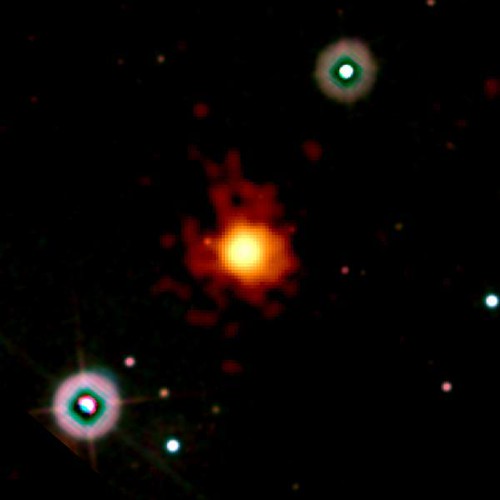All your satcom news is mine, via Bill McDonald:
TacSat 3 launch scrubbed May 7 due to bad weather in Wallops Island area.
[Satnews – 05/08/2009]
Russia successfully places Express AM44 satellite, named after A.S. Popov, into operation at 11 West within the Russian Satellite Communications Company satellite constellation.
[Satnews – 05/07/2009]
Pathfinder Space Tracking and Surveillance System (STSS) Advance Technology Risk Reduction (ATRR) satellite successfully launched from Vandenberg AFB by the Missile3 Defense Agency, supported by NASA and commercial firm United Launch Alliance.
[Satnews – 05/07/2009]
Planned acquisition of DataPath by Rockwell Collins receives approval of stockholders.
[Satnews – 05/07/2009]
El Corte Ingles will distribute Eutelsat’s Tooway satellite broadband service to retail customers in Spain.
[Satellite Today – 05/07/2009]
Space Systems/Loral is selected to provide new communication s satellite, AsiaSat 5C, to Asia Satellite Telecommunications Company Limited.
[Satnews – 05/07/2009]
TacSat-3 is scheduled for May 7 launch from Wallops Island; features 3 revolutionary trials including Raytheon’s advance imaging spectrometer, Air Force avionics experiment, and Office of Naval Research’s satellite communications package.
[NASA – 05/06/2009]
DirecTV merger with John Malone’s Liberty Entertainment results in simplification of DirecTV’s ownership, setting the stage for future deals.
[Satnews – 05/06/2009]
KVH debuts TracPhone FB150, 10.5" in diameter and 12" high, to offer small, cost effective broadband internet package for maritime applications, suited for boats as small as 40 ft.
[TMC Net – 05/06/2009]
C2SAT, actively working to establish a new presence in China covering local production facilities and product sales, is rewarded by largest single order to date, seven C2SAT 2.4m C-band antennas within six months.
[Satnews – 05/06/2009]
HD DTH satellite service to be offered in Phillipines by the Phillippine Long Distance Telephone Company and MediaQuest.
[Satellite Today – 05/06/2009]
Echo Satellite, offering satellite communications "hotspots" enabling wireless coverage for multiple users in any non-line-of-sight environment, changes name to SatMax in response to request from EchoStar Corp.
[Houston Business Journal – 05/05/2009]
Spacenet Inc. provides transportable satellite communications solutions to Erie Insurance for mobile claim centers.
[Globe Newswire – 05/05/2009]
Australian government’s national high-speed national broadband strategy, "Ruddnet", focusing on 100mbps fiber connectivity to 90% of the population, and 12 mbps satellite connectivity to the rest, divides the nation.
[The Australian – 05/05/2009]
NASA officials lobby for extension of shuttle program to close gap between shuttle program and debuting of the Ares/Orion manned flight capability.
[R&D magazine – 05/04/2009]
U.S. military to launch experimental tactical satellite to demonstrate inexpensive user-friendly space technologies.
[Space.com – 05/04/2009]
AT&T CruiseCast car satellite system for in-car video, currently offering 22 channels, is soft-launched at select retail outlets.
[twice-com – 05/04/2009]
Giga-Com delivers satellite broadcast solutions to Kuwaiti government.
[Satellite Today – 05/04/2009]
French Airline installs Panasonic satellite in-flight entertainment system.
[Satellite Today – 05/04/2009]
Australian satellite company Codan acquires Locus Microwave.
[Satellite Today – 05/04/2009]
KVH announces promotion to make it easier for "big dish" maritime users to "move down" to the KVH "mini-VSAT" broadband service using the TracPhone V7(R) hardware.
[PR Newswire – 05/04/2009]
China Electronics Technology Group chief engineer states that China will be able to provide free global navigation and positioning services by 2020 with its own constellation of satellites named "Compass."
[Satnews – 05/04/2009]
Abu Dhabi or Dubai targeted to be host of new spaceport for space tourism in talks between Virgin Galactic and parties in the UAE.
[The National – May 3, 2009]
SatMagazine interviews Rob Bednarek, President and CEO of SES AMERICOM-NEW SKIES.
[SatMagazine, May 2009]
Finding the Next Generation Aerospace workers for the U.S. Satellite Industry (a crisis in looming in the workforce).
[SatMagazine feature – May 2009}
SatMagazine interviews Charlie Maloney, GOES N-P Program Manager for Boeing Space and Intelligence Systems, responsible for final systems test and launch preparations for next generation GOES satellites.
[SatMagazine – May 2009]
SatMagazine interviews Dr. Jesus Villasenor of M.I.T. and Mr. Luke Volpe of Dynamics Research Corp., about NASA’s HETE mission.
[SatMagazine – May 2009]
NSR Report – Supervisory, Control and Data Acquisition (SCADA) as well as Machine-to-Machine (M2M) services largely recession-proof; satellite platforms providing reliable ubiquitous communications to widely separated areas becoming increasingly important in these vertical markets.
[NSR Report – May 2009]
C2SAT – technology for the future – 4 axis antenna designed to increase reliability, precision, and accuracy of maritime terminal tracking of satellites for all vessels.
[SatMagazine feature – May 2009]









